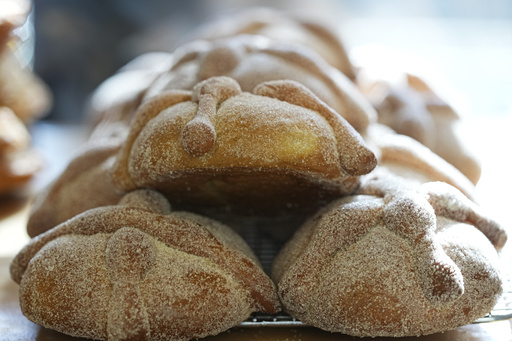MEXICO CITY — The first experience of tasting “pan de muerto” is a delightful explosion of sweetness and citrus. This traditional bread, translating to “bread of the dead,” is a beloved treat in Mexico, prepared annually from early October until mid-November as part of the Day of the Dead festivities.
Pan de muerto is typically shaped like a bun, adorned with bone-like decorations and sprinkled with sugar. It finds a place in coffee shops, on dinner tables, and on homemade altars, which Mexicans set up to honor and remember their departed loved ones, inviting them back for a night on November 2. Although the exact origins of this bread are hard to pinpoint, it symbolizes a blend of Mesoamerican and Spanish culinary traditions, as noted by Andrés Medina, a researcher at the Anthropological Research Institute of the National Autonomous University of Mexico.
Celebrations and remembrance for the dead have been a part of Mexican culture for centuries. Since pre-Hispanic times, people have honored the deceased with festivities, including the creation of skull-shaped items. The arrival of the Spaniards in the 1500s led to the inclusion of new ingredients, such as sugar and bread, into the traditional offerings made by Indigenous peoples. According to Medina, these early celebrations often aligned with the harvest season, which gives pan de muerto a deep spiritual significance. The bone-like decorations symbolize life’s origins according to Mesoamerican beliefs.
An ancient myth tells the story of Quetzalcóatl, the god who created humans from bones. Variations exist within the sources, but the tale explains that he obtained these bones from the underworld. It is said that life’s seed was produced from his blood. Medina emphasizes that, from this perspective, bones in the human body—similar to seeds found inside fruits—are vital for life. Altars, therefore, serve as offerings to fertility, positioning the Day of the Dead as a celebration of the life within each seed.
The preparations, ingredients, and shapes of pan de muerto can vary significantly from one region to another; however, it remains a popular treat throughout the country. In Mexico City, bakeries are abundant with various iterations of this beloved bread. One enthusiast, Rodrigo Delgado, has dedicated years to sampling and reviewing different versions. Starting a decade ago with only 15 samples, his commitment has grown, leading to his sampling of 100 in 2023, and he aims for at least 110 this season.
“I have a fondness for pan de muerto because of its significance during the Day of the Dead,” Delgado stated. He runs a blog named Godínez Gourmet, where he also reviews local eateries, and appreciates the comforting flavors and textures of the bread. Although he can’t recall his first taste of pan de muerto, he cherishes memories of helping his mother make it, kneading the dough and forming the decorative bone-like elements.
Creating pan de muerto is labor-intensive. According to Manu Tovar, the owner of Panadería Dos Veinte in the San Rafael neighborhood of Mexico City, preparing these sweet buns requires a three-day commitment: one day to extract flavor infusions, another to blend them into the dough, and a final day for kneading and shaping the buns. Tovar uses simple yet seasonal ingredients such as orange blossom, tangerine zest, anise, and butter, with a personal touch coming from his sourdough starter, which he maintains with regular additions of water and flour.
After resisting requests to begin making pan de muerto early in October, Tovar decided to start earlier this season, baking about 90 pieces daily. He has also experimented with new creations, like a croissant filled with marigold cream and a “concha” styled in the shape of a marigold, infused with tangerine instead of traditional flavors like vanilla or chocolate.
He mentions that the timing of the traditional recipe aligns with the seasonal availability of fruits, which he believes contributes to its uniqueness. The ambiance during the Day of the Dead also enhances the experience, with nights arriving earlier and a distinct sense of mystique in the air. Tovar points out that this atmosphere may evoke a special kind of melancholy, reminding people of their loved ones who have passed, allowing them to feel closer to the memories on this meaningful day.


